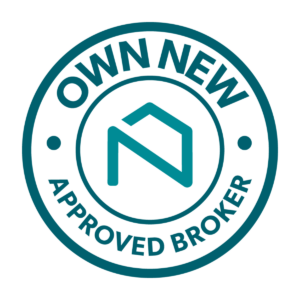Drawdown Equity Release Explained: Lifetime Mortgage Options for Over 55’s

If you’re over 55 and are looking to access some of the wealth tied up in your home, then equity release is most probably on your mind.
While historically, equity release had a somewhat negative reputation – specifically with concerns over high-interest rates and complex terms – today, equity release products have new regulations that have made it safer and more beneficial for those looking to plan their finances into their later life.
In particular, drawdown equity release is gaining popularity as a flexible way to borrow money against your home through a lifetime mortgage.
But what is drawdown equity?
In this short guide, we explain exactly what drawdown equity release is, how it works, and evaluate the benefits and drawbacks of choosing drawdown equity release as your lifetime mortgage. Let’s begin.
What is a Lifetime Mortgage?
In its simplest format, a lifetime mortgage is a form of equity release that allows you to access a percentage of your property’s value. This type of mortgage allows you to retain ownership of your home and continue to live in it. A lifetime mortgage loan is typically repaid only when you pass away or are moved into long-term care.
This mortgage product is specifically designed to provide homeowners of a certain age – generally 55 years of age and above – a way of accessing funds that are otherwise tied up in their house, without the need to move or sell their home.
As these products are specifically targeted for those later in their lives, should you be under the age of 55, you won’t be eligible for traditional equity release products.
How Does a Lifetime Mortgage Work?
With a lifetime mortgage, you can borrow money based on the value of your property, and interest is charged on the loan amount.
Most importantly, lifetime mortgages are unlike regular mortgages as you are not required to make any monthly repayments. Instead, the loan, along with the accrued interest, is generally repaid when you either pass away or move into a permanent care facility.
Upon completing a lifetime mortgage agreement, there are two ways in which your equity release will be paid out to you:
- A lump sum release: This is where you would accept all the funds at once.
OR
- Drawdown equity release: This allows for a more structured financial plan whereby you access both a lump sum figure, while also accessing funds as needed over time.
Importantly, lifetime mortgages will still charge interest. While this interest will generally be paid after the sale of your property (when you no longer need it), you should always pay attention to the compounding sum.
Lifetime fixed rate mortgages – as the name suggests – holds the same interest rate for the entirety of your mortgage, even if the housing market changes. This offers security and makes it even easier to plan your finances in the future.
Fortunately, with the introduction of the no negative equity guarantee, you can ensure that you will never owe more than the value of your property.
If you’re interested in learning more about equity release mortgages and the new regulations that have made this product one of the safest on the market today, it is best practice to work with a trusted equity release broker.
Here at Boon Brokers, our dedicated experts can help guide you through the entire process, from explaining lifetime mortgages to matching you with the perfect lender. We offer a fee-free, start-to-finish approach and are here to help you.
See What Our Clients Have To Say
What Can You Use Drawdown Equity Release For?
The primary benefit of a drawdown equity release is the flexibility it provides. Rather than accessing your funds in an entire lump sum upfront, you can structure a financial plan tailored to your needs, accessing the money you require in smaller portions over time.
This is a great option for those who want to structure their retirement plans, and who need a small portion of money now and various financial increments in the future.
While the funds can be used for anything you desire – after all, the money is yours – there are few common things that lifetime borrowers could use the funds for:
- Pay off any existing mortgage debt or consolidating other loans
- Home improvements or renovations, such as adapting your home for mobility needs
- Topping up your pension or retirement income to maintain your standard of living
- Helping your family with finance, whether for education, buying their first home, etc.
- Covering unexpected health or care costs that have accumulated or might arise in later years
In short: The key takeaway of a drawdown equity release product is that it allows you to access your funds gradually, giving you the control to manage how much you borrow and when.
Talk to an Adviser About Your Situation – No Obligation
Get In TouchBenefits of Drawdown Equity Release Plans
In short: The main benefit of a drawdown equity release plan is that it can provide you with the financial flexibility, helping you to keep costs under control and manage your overall financial position.
In addition to this, there are some additional benefits to a drawdown equity release mortgage over a traditional lump sum, including:
Interest is Lower Over Time
With a drawdown equity release, you will not incur interest on the entire loan facility but instead only on the amounts you actually withdraw.
Because of this, the total interest you repay over time could be significantly lower compared to taking a lump sum upfront.
It is important to note that any funds you release through equity release are completely tax-free, as they are treated as a loan rather than income.
Flexibility in Withdrawals
As we’ve previously mentioned, the main advantage of a drawdown equity release plan is the financial flexibility it can provide.
Due to the fact you can take money out as and when you need it – you’re not tied to having a large fixed sum when you don’t need it. This is particularly useful for those who want to plan and maintain control over their finances and future plans.
Protects Your Inheritance
If you’re concerned about inheritance and want to leave something behind for your loved ones, a drawdown lifetime mortgage could help over a lump sum lifetime mortgage withdrawal.
Due to the fact that you’re only borrowing what you need, the interest you will be required to pay at the end will accumulate on a smaller amount, helping preserve more of the value of your home.
With this being said, if protecting your inheritance is a primary concern of yours, there may be better mortgage solutions than an equity release. This is due to the fact your house will be sold in order to settle the equity loan, either after you pass or when you move into full-time care.
Helps Manage Benefits
In the case that you’re reliant on benefit schemes, taking smaller amounts of money in stages can be a helpful way to avoid affecting any means-tested benefits, including Pension Credit.
This allows you to plan your finances with a holistic view of how your equity release may impact your overall financial situation.
Drawbacks and Considerations of a Drawdown Mortgage
While we have outlined the many advantages to a drawdown equity release lifetime mortgage, nothing in life is completely perfect, and so naturally there are some downsides that you need to know.
Here are the most common drawbacks and what you will need to consider before taking out drawdown equity release lifetime mortgage:
Access to Funds May Not Always Be Guaranteed
The most common misconception about equity release drawdown is that the funds will always be available.
Unfortunately, in times of market uncertainty, lenders reserve the right to restrict access to the amount you can withdraw from your drawdown loan. As such, with a drawdown lifetime mortgage, you are – to some extent – reliant on the stability and reliability of both the housing market and your chosen lender.
It is always best practice to check the terms carefully and be aware of any restrictions. Additionally, it is always worth evaluating your chosen lender’s financial stability and history when choosing a product.
Interest Accumulates Over Time
An unavoidable fact – as with any lifetime mortgage – is that interest will compound on the amount you borrow.
Even though a drawdown mortgage will allow you to borrow/withdraw your money in stages, the interest can still build up significantly, which in turn will reduce the value of your home over time.
Crucially, if the interest accumulates faster than you anticipate, this could leave you with less equity than you expected.
Early Repayment Charges
While early repayment charges are rare in most equity release cases, should you decide to repay the loan early, you could face early repayment charges. While drawdown equity release is flexible in terms of withdrawals, it’s important to understand the terms and conditions set out by your chosen lender in regards to the loans full repayment.
Impact on Leaving Your Estate
As we mentioned earlier, any money you borrow against your property will naturally reduce the value of your estate. This is an important factor to consider if you’re planning on leaving an inheritance – and this is a primary concern for you.
By withdrawing money through drawdown equity release, you may ultimately reduce the value of your home for your beneficiaries. In addition, it is likely that to repay your lifetime mortgage loan, your property will typically be sold when you pass, meaning your actual estate will no longer be able to be left in your inheritance.
Is a Drawdown Facility Guaranteed?
A drawdown facility is simply the term used to refer to your drawdown equity release loan. As noted above, a drawdown lifetime mortgage stipulates that rather than withdrawing your loan in one lump sum, you are able to withdraw your funds in increments, as and when you need.
So, “Is a drawdown facility guaranteed?”
The short answer is no. While lenders agree in principle to make funds available, this commitment is subject to outside influences, like market behaviour and the wider economy.
For example, in periods of financial uncertainty, such as during the COVID-19 crisis, some lenders were made to pause drawdown loans.
Get in Touch with an Equity Release Broker
The decision to release equity from your home is a significant one. That’s why it’s vital that you have an experienced adviser who can help guide you through the ins and outs of equity release, providing you with the most up-to-date information on the process with clarity and expertise.
At Boon Brokers, we’re a fee-free mortgage broker specialising in lifetime mortgages, including flexible drawdown on mortgage plans. Our dedicated equity release brokers can help you navigate the pros and cons of equity release drawdown, so that you can make an informed choice that matches your future financial plans.
Whether you’re looking to access property wealth to top up your retirement income, assist a loved one, or to make some much needed home improvements, our dedicated team is here to help you.
Contact Boon Brokers today and get fee-free expert advice.











